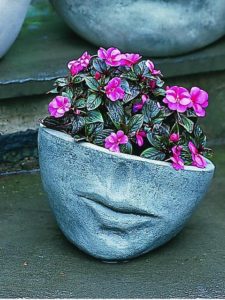The Hot and Cold Truth on Composting
“Hot and cold” calls to mind Katy Perry’s song about being in a relationship with someone unpredictable. Others associate it with the changing seasons, or to describe food. Green living advocates are singing a different tune when it comes to hot and cold, because for them, these are the basic methods of a practice known as composting.
Composting is humanity’s way of giving back to Mother Nature. It is the intentional effort to collect all organic material from household waste and manage its decomposition in pits or bins to produce a soil-enhancing substance known as compost. According to EPA, thirty percent of wastes are comprised of organic materials (food scraps, leaves, twigs, grass clippings), which can then be composted and kept out of landfills.
While decomposition of organic material occurs naturally, the process is not necessarily efficient. In hot composting, the right mixture of brown and green ingredients is incorporated with water and air to build a suitable environment for microbes to thrive which in turn speeds up the decomposition. This method is also called aerobic composting. Temperatures in these piles can reach up to 160°F (71°C) killing weeds and deterring worms. A well-managed aerobic compost pile decomposes completely in less than a year.
In contrast, cold composting is slower and the temperatures rarely go up because there are fewer microbes present to consume the organic materials. The advantage of this method over hot composting is it requires less labor and is suitable for households who don’t generate a lot of waste.
Success in composting can be achieved by managing your pile well. It begins with knowing what should go into your compost. Meats, fish, bones and animal fat are big NO-NOs. These items are very attractive to vermin, raccoons and possums. Do not ever add pet waste as this will increase the risk of propagating pathogens, plus the smell will be unpleasant. Always cover bins and install fences to prevent unwanted entry to the piles.
Following rules of thumb on the right of mix of browns (carbon rich materials) and greens (nitrogen rich materials) counts in building a healthy compost pile. As a guideline, use a third of greens with two-thirds browns. Browns are bulky and allow oxygen to penetrate the mixture and nourish aerobic microbes. Excessive greens make the pile dense and smelly. To keep your pile in good shape, always cover fresh green materials with browns. You can never go wrong with adding more carbon-rich material.
Giving your pile a quick turn every two to three weeks will keep the microbes alive as they work on decomposing the waste. Adding crumpled newspaper or other coarse material like straw can provide sufficient aeration too.
Using compost in the garden improves the overall structure and texture of the soil, allowing it to hold moisture and oxygen better to encourage the healthy development of plant roots. Furthermore, it gives you the opportunity to do your share in reducing solid waste and preserving the natural environment.





Comments on this entry are closed.